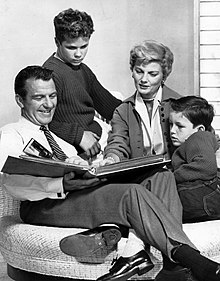Dr. Spock and his Common Sense
by admin - November 20th, 2017
By Meagan Sebastiao
Doctor Benjamin McLane Spock was born on May 2, 1903 in New Haven, Connecticut. He was born into a family with strict parents and five younger siblings. Growing up, his parents did not allow he or his siblings to eat certain foods, had to be in bed no later than 6:45 P.M., and the children ate separately from the parents. Spock attended the notorious Yale University as an architecture major, but realized two years later that his true calling was medicine. At the 1924 Olympics in Paris, France the Yale rowing team that Dr. Spock was on took home the gold medal. After receiving his bachelor’s degree in 1925, he attended Yale Medical School for two years and graduated from Columbia University’s College of Physicians of Surgeons at the top of his graduating class.
Spock’s interest in children did not develop until after he completed his residencies, opened his own private practice which was deemed unsuccessful because he opened it in 1933 during the Great Depression, and he began to continue his research at the New York Psychoanalytic Institute. His main goal here after all of the work he put in was to understand why children behave the way they do and what correlation parents to the behavior of their children. Dr. Benjamin Spock began writing his book, Common Sense Book of Baby and Child Care, while enlisted in war efforts serving as a U.S. Naval Reserve psychiatrist in the Medical Corps. He published the first edition in 1945, one year after joining the war. He was discharged one year later, just in time for the sales and popularity of his book and methods to skyrocket. This book became “…the most widely selling book of the fifties” (Dunar, Andrew J.).
Since the time of the publication to the death of Benjamin Spock in 1998, the book has sold over 50 million copies and is written and translated in 42 different languages. This proves to be a very commonly read and used book during this time, and is known worldwide. No matter the different beliefs of the readers, this book was beneficial to the essentials and necessities of having a baby and taking care of he or she. Common Sense Book of Baby and Child Care was written just in time for the baby boom as there were many new mothers who thought of Dr. Spock’s book as a how-to-raise-a-child guide. One of the main goals he had in writing his book was to ask and convince parents to trust their instincts and to follow their common sense. He wanted to reject, “stern rules and regulations, and urged parents to talk to and play with their babies more,” (“Benjamin Spock”).
Dr. Benjamin Spock’s beliefs expressed in his book were often viewed as controversial because of how relaxed his advice to parents was. He told mothers, “that parents needed to follow the cues of their babies,” (“Spock at 65: Five Ideas That Changed American Parenting.”). Common Sense Book of Baby and Child Care has been through eight revisions in order to cover new ideals and values as they change and progress in society and history. He has revised his book to include answers to popularly asked questions and to accompany different family situations such as teenage pregnancy, television watching in infants and toddlers, divorce of families, gay and lesbian marriage and parents, the father’s role in the mother’s pregnancy, sexism, acknowledging that the father’s role is equally as important as the mother’s, and more. Today, in the book’s eighth edition, newly titled Dr. Spock’s Baby and Child Care addresses all of these topics and more, and continues to help families across the world.
Works Cited
“Benjamin Spock.” Newsmakers, Gale, 1998. U.S. History in Context, libraries.state.ma.us/login?gwurl=http://link.galegroup.com/apps/doc/K1618000210/UHIC?u=mlin_c_worstate&xid=6a3edf74. Accessed 14 Nov. 2017.
Dunar, Andrew J. America in the Fifties. Syracuse University Press, 2006.
Hughes, Ivy. “Profiles in Greatness: Dr. Benjamin Spock.” SUCCESS Magazine, 22 Sept. 2015, www.success.com/article/profiles-in-greatness-dr-benjamin-spock.
“Spock at 65: Five Ideas That Changed American Parenting.” Time, 14 July 2011, healthland.time.com/2011/07/14/65-years-since-spock-five-ideas-that-changed-american-parenting/.








